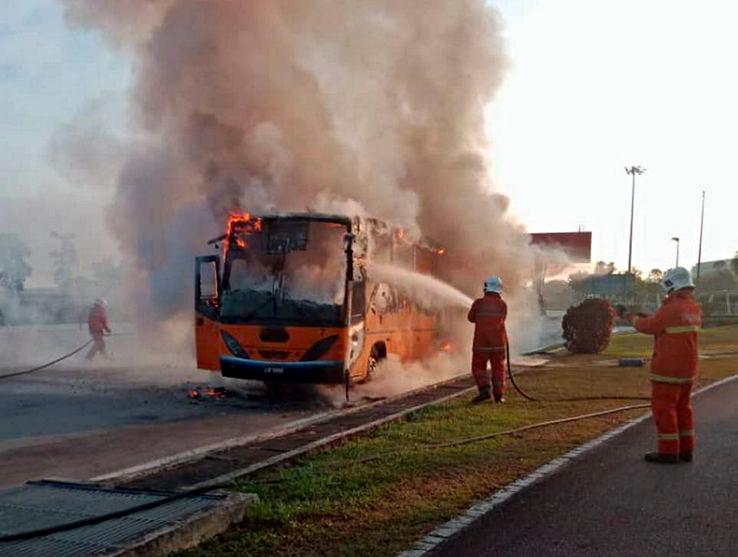ON Oct 1, a school bus with 38 students and six teachers on a field trip caught fire on the outskirts of Bangkok, resulting in the deaths of 25 passengers. The remaining 16 students and three teachers were treated at a hospital.
It was reported that the front left tyre burst, causing a fire that subsequently ignited the natural gas for vehicles (NGV) used as engine fuel. This incident resulted from inadequate tyre maintenance and either a poorly designed or improperly installed gas conversion kit, or both.
Fleet operators of heavy vehicles may follow standard operating procedures and have the resources to check tyre pressures regularly, but others often rely on mechanics or self-service air pumps at fuel stations.
Is anyone monitoring how often the tyre pressures of heavy vehicles are checked? This is crucial for school, worker and excursion buses. These vehicles are normally operated by the same drivers, many of whom may lack diligence.
Underinflated tyres can lead to over-flexing, and when driven long distances, they can severely weaken the casing and generate intense heat until the tyre ultimately bursts.
We should have tyre centres next to rest and relaxation areas along highways, to allow heavy vehicles to have their tyres quickly checked for pressure, cuts and bulges by specialists at reasonable fees. Receipts should be issued for drivers to claim expenses.
ALSO READ: School bus catches fire in Thailand, 25 feared dead
Petrol or diesel engines can be converted to run on cheaper NGV, but this is only worthwhile in the long run as conversion kits can be costly. The high-pressure cylinders for storing compressed natural gas must meet stringent safety standards to prevent explosions or leaks in the event of a collision.
On Jan 13, a bus with 28 passengers travelling on the North-South Expressway from Singapore to Kuala Lumpur ran over a motorcycle that had been left on the road after an earlier accident, dragging it for several metres before the bus caught fire.
The co-driver and a tour guide were unsure how to handle the situation. However, the driver managed to kick open the malfunctioning door, allowing most of the passengers to escape just in time as the fire quickly turned into an inferno.
But a family seated at the back, who were the last to escape, were not so lucky. Tragically, a 17-year-old girl died while three other family members suffered burns. Ironically, they were seated next to the rear emergency door and could have opened it to jump off the bus with minimal injury.
In a state of panic, neither the passengers nor the crew thought to use the emergency door, recounted a survivor. It may be beneficial to conduct safety briefings before bus departures, emphasising the use of emergency doors and seat belts, particularly for passengers seated in the front row.
ALSO READ: 16 individuals escape fiery death in express bus fire
In 2016, a tour bus on the way to the airport in Taipei was engulfed in flames due to an electrical short-circuit caused by overloaded electrical outlets. All 26 people on board – 24 passengers, the driver and a tour guide – tragically lost their lives.
The autopsy revealed that the driver’s respiratory tract was burned from inhaling high-temperature smoke after he was knocked unconscious by carbon monoxide while driving, leading to a loss of control of the bus.
Worse still, the emergency door could not be used because the bus company had installed a lock for added security. Many passengers leave their shopping bags inside the bus overnight, and the driver must unlock it the next morning. However, he sometimes forgets, as he did on that fateful day.
As an added safety feature, buses could be equipped with small hammers for breaking window glass in emergencies.
ALSO READ: KL Rapid bus catches fire, anxious moments for seven passengers
Buses should carry three fire extinguishers: One near the driver and others in the luggage and engine compartments.
Additionally, all heavy vehicle drivers should practise how to extinguish fires.
We need to be better prepared to prevent and contain bus fires, especially since passengers are not covered by the bus’ motor insurance. Victims or their families may have to file civil suits for the damages and losses incurred.
YS Chan









